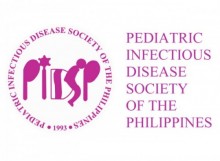Journal 2022 Vol.23 No.1
Review Article
Meningococcal Disease and Carriage in the Philippines: A Review of Recent Data
Anna Lisa Ong-Lim, M.D.
Abstract
This article reviews recent data on meningococcal disease and carriage in the Philippines. It aims to provide information on the epidemiology of meningococcal disease, its carriage, data on prevention, and the impact of vaccination on disease and carriage. The World Health Organization considers the Philippines as having low endemicity for meningococcal disease. However, current data underestimates the true burden in the country due to many factors. In recent years, data from the Philippines show a high case-fatality rate since only the septicemic form is being reported. Studies on asymptomatic meningococcal carriage rates are sparse, with one study by Gonzales, et al. investigating the prevalence of meningococcal nasopharyngeal carriage in Filipinos aged 5-24 years old living in an urban setting. The study showed that the overall prevalence of carriage was 3.7% and was highest (9%) among the 10-14 age group. Serogroup B was the most common isolate. Effective meningococcal vaccines are available. Although not included in the National Immunization Program, medical societies recommend giving vaccines to individuals at high risk of infection. Data on local epidemiology accounting for the disease and asymptomatic carriage are important to strengthen future programs on immunization and prevention of meningococcal disease.
Keywords: Meningococcal disease, Meningococcal vaccine, Meningococcemia
https://doi.org/10.56964/pidspj20222301003
View Full Article in PDF format
